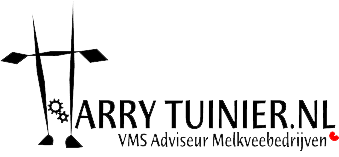Is grazing cows while having milking robots an disadvantage?
Maybe, after all, always cows have to be milked all day long.
But as the great soccer player Johan Cruyff once said: “Every disadvantage has its advantage” which is also clear with milking and grazing with milking robots, especially when it’s as hot as it is.
In nature, the cow ate before and during sunrise, filling up its rumen and then, sheltered on a safe place, e.g. under the shade of the trees ruminating the harvested grass.
At sundown, the cow did the same and then ruminated while being sheltered, to escape the wild animals. In the evening the grass is the tastiest and the cow eats the most, in the morning the grass with dew is slightly less tasty and sweet.
With this behavior, she produced enough milk for her calf and enough energy to maintain herself.
But nowadays the cow has to give 4 to 5 times as much milk as before.
The advantage: this natural behavior can be perfectly imitated with robotic milking!
At non-robotic farms, the most productive grazing times are often the milking times…..
Adjust the times at the selection gate to a time before sunrise. So in the spring, that would be around 6 am. During the longest day and/or during warm weather adjust the time so that the first cows can go outside again at 4 am! If it is getting warm again, instead of 1 pm, start feeding the cows in the barn earlier: for example, 10 am/11 am since that is now the sheltered, cool and safe place.
The barn must, of course, have fresh air.
And then you can perform the cow-control job.
The same goes for the evening, send the cows outside after the heat, usually after 4 pm but in the high-summer head towards sending them outside at 5-6 pm, and once it gets dark place new feed at the trough or adjust the existing feed (with some noise 😉 ).
Always adjust feed quantities and protein supplementation with the amount of grass they can eat.
With the heat and drought this year, the grass intake will not be much but the number of hours pleasant outside is more important.
This way, you still get a lot of feed in the cow while having the minimal effect of the warmth so that the production and stamina stay consistent






